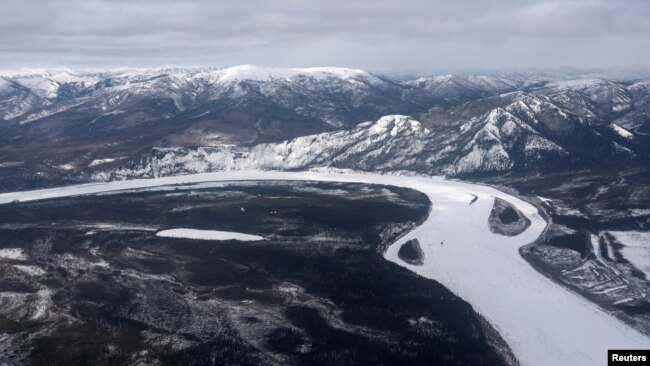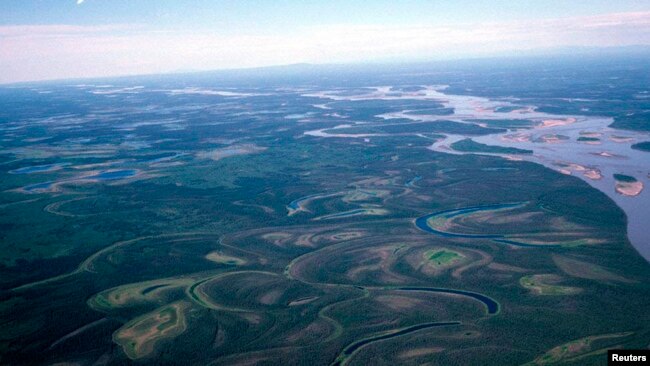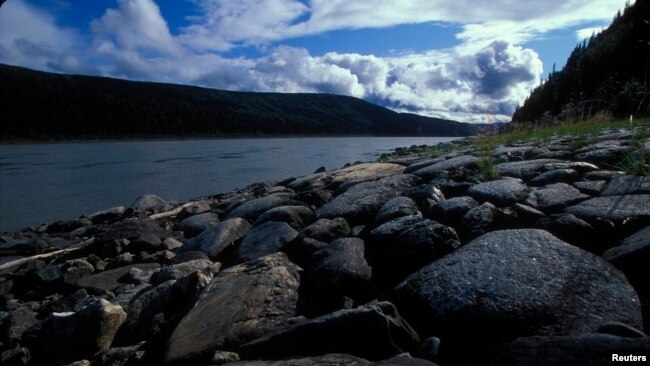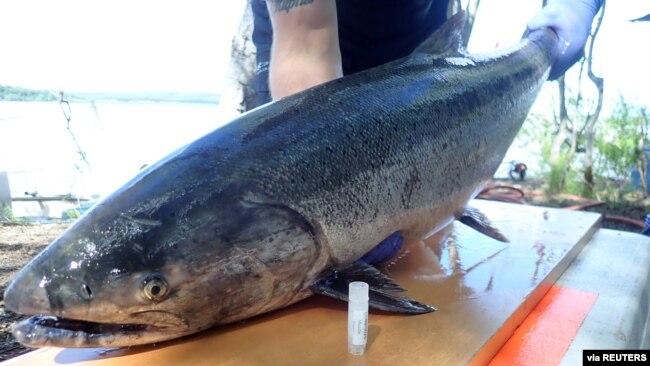気候変動により消えるアラスカのサケ
気候変動により減少する種、侵略・殺戮により失わる命。
どちらも人類の仕業です。止められるのも人類です。
私たちの選択で未来を変えることが出来るのです!!
VOAで英語を学びましょう!!
気候変動がアラスカのサケを餓死させていると当局が発表(和訳)
Officials Say Climate Change Is Starving Alaska’s Salmon
March 03, 2022
アラスカのユーコン川は近年、サケの重大な不足に直面しています。この不足は水温の上昇に起因しています。
当局によると、昨年の記録的な高温により、全長3,200キロの川でほとんどのサケが繁殖する前に死んでしまったと言います。
このため、アラスカとカナダは2021年にサケの捕獲を中止し、次年度の繁殖に必要な魚が十分に生き残るようにしました。この事態を受けて、地元当局は、食料をサケに依存する川沿いのコミュニティに魚の緊急輸送を行うことになりました。
科学者たちは、この問題の大半を、2014年から2019年にかけてベーリング海と北太平洋で起きた一連の熱波のせいだと非難しています。暖かい海水は、産卵地に戻る前の海に住むサケに影響を与えました。
気候変動はサケが食べるものにも影響を及ぼしているかもしれません。漁業の専門家によると、海水温の上昇によって通常餌となる健康な生物がいなくなったため、若いサケはクラゲなどの栄養価の低い餌でお腹を満たしている可能性が高いとのことです。
「私の考えでは、気候変動によってサケは飢えているのだと思います」とブルック・ウッズ氏は言います。彼女はアサバスカン族の村ランパートにあるユーコン川部族間魚類委員会に所属しています。
気候変動が淡水環境に与える影響も研究されています。ヴァネッサ・フォン・ビエラ氏は米国地質調査所の研究生物学者で、サケが一生の初期と後期を過ごす川や小川、湖を調査しました。彼女のチームは、チヌークサーモンが摂氏18度以上で熱ストレスを示すことを発見しました。20℃を超えると死に始めます。
過去、アラスカ・ユーコンの水温は12〜16℃の間にとどまっていました。しかし2019年には、アラスカ側の気温が44日間連続で18℃を超えたことが、最近の研究で明らかになりました。
水温上昇の影響は、気候変動による氷河の流出によって、より冷たい水が川や小川に流れ込むことで軽減することができます。しかし科学者たちは、サケがアラスカ内の新しい地域にゆっくりと移動し始めると予想しています。
「サケは道を見つけるだろう」と生物学者のフォン・ビエラ氏は言います。「しかし、サケがいなくなる可能性のある場所にいるコミュニティにとってはつらいことでしょう」と。
Officials Say Climate Change Is Starving Alaska’s Salmon
Alaska’s Yukon River has faced major salmon shortages in recent years. The shortages are blamed on warming waters.
Officials say record-high temperatures last year killed most salmon in the 3,200-kilometer river before the fish were able to reproduce.
The losses led both Alaska and Canada to halt their salmon harvests in 2021 in order to make sure that enough fish survived to reproduce for another year. The situation caused local officials to send emergency fish shipments to communities along the river that depend on salmon for food.
Scientists have mostly blamed the problems on a series of heat waves in the Bering Sea and North Pacific Ocean from 2014 to 2019. The warm ocean waters affected salmon living in the sea before they returned to their spawning grounds.
The collapsed Yukon River salmon harvests caused major financial losses to private fishing companies in the area. The die-offs also hurt native communities, which traditionally store the fish as a year-round food supply.
In 2020, fishing companies on the Yukon River earned a combined $51,480. By comparison, they earned $2.5 million in 2019 and $4.67 million in 2018.
Last month, the U.S. Department of Commerce declared a disaster for Yukon River fishing for 2020 and 2021, making federal aid money available.
Alaska has sent emergency fish shipments to areas affected by the salmon shortages. The shipments came from more productive fisheries in the southwestern fishing community of Bristol Bay and other areas.
While the heat waves have passed, their effects have not, said fisheries scientist Katie Howard. She is with Alaska’s Department of Fish and Game. “We’re still seeing the residual effects,” Howard told a state legislative group earlier this month.
Climate change may also be affecting what the salmon are eating. Fishing experts say young salmon are likely filling up on nutrient-poor food like jellyfish because warmer waters drive away healthier organisms they normally feed on.
“In my opinion, the salmon are starving with climate change,” said Brooke Woods. She is with the Yukon River Inter-Tribal Fish Commission in the Athabascan village of Rampart.
The effects of climate change on freshwater environments have also been studied. Vanessa von Biela is a U.S. Geological Survey research biologist who looked at the rivers, streams and lakes where salmon spend early and late periods of the lives. Her team found that Chinook salmon show heat stress at temperatures above 18 degrees Celsius. They start dying above 20 Celsius.
In the past, Alaskan Yukon water temperatures stayed between 12 and 16 Celsius. But in 2019, temperatures on the Alaskan side were above 18 degrees Celsius for 44 straight days, a recent study found.
The effects of warming waters can be reduced by climate-driven glacier runoff, which brings cooler water into rivers and streams. But scientists still expect salmon to begin slowly moving to new areas within Alaska.
“Salmon will find a way,” said biologist von Biela. “But it is going to be hard for communities that are in places where there might not be salmon anymore."
Words in This Stor
spawn – v. when animals release or deposit eggs
residual – adj. remaining or left over
stream – n. a small river
stress – n. great worry or emotional difficulty
glacier – n. a large mass of ice that moves very slowly, usually down a hill or valley



